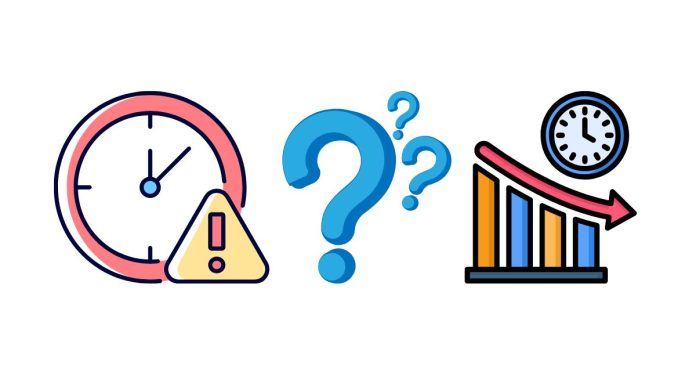When conversing in Spanish, you’ll often encounter questions about time, particularly when planning to meet someone or discussing schedules. One common question you might hear is “¿A qué hora vas?” which translates to “At what time are you going?” If you’re unsure how to respond, don’t worry! In this blog post, we’ll go over how to answer this question in Spanish, with examples and tips to help you sound natural.
Basic Structure of the Question
Before we dive into answering, let’s first break down the question “¿A qué hora vas?”:
- ¿A qué hora? means “At what time?”
- Vas is the conjugated form of the verb ir, which means “to go,” specifically in the second-person singular (informal “you”) form.
The question is asking at what time you are leaving or going somewhere. It’s commonly used when you’re talking about plans or schedules, such as going to work, a meeting, or even to a party.
How to Answer
When responding to “¿A qué hora vas?”, you will generally give the time you plan to leave or arrive, depending on the context. Here are some ways to answer:
a. Simple Time Answer
You can simply provide the time in the 24-hour clock (often used in Spanish-speaking countries) or the 12-hour format, depending on the country or personal preference. For example:
- Voy a las 3:00. – “I’m going at 3:00.”
- Voy a las 5:30. – “I’m going at 5:30.”
- Voy a las 7 de la tarde. – “I’m going at 7 PM.”
In this case, “a las” means “at the” and is used when giving the specific time. Remember that the 24-hour format (like 15:00 for 3:00 PM) is often preferred in countries like Spain, while many Latin American countries may use the 12-hour format, with AM/PM for clarification.
b. Specific Time with Details
If you want to give a more specific answer, especially if there are additional details (like “in the morning” or “in the evening”), you can add those to your response:
- Voy a las 8 de la mañana. – “I’m going at 8 in the morning.”
- Voy a las 9 de la noche. – “I’m going at 9 at night.”
- Voy a las 2 de la tarde. – “I’m going at 2 in the afternoon.”
Here, “de la mañana” means “in the morning,” “de la tarde” means “in the afternoon,” and “de la noche” means “at night.”
c. Answering with a Range or Approximation
If you’re not sure about the exact time or if your plans are flexible, you might provide an approximation:
- Voy más o menos a las 6. – “I’m going around 6.”
- Voy entre las 2 y las 3. – “I’m going between 2 and 3.”
- Voy a eso de las 5. – “I’m going at about 5.”
This is a helpful way to answer when your plans are not fixed or when you want to convey flexibility in your timing.
d. Responding with Delays or Postponement
Sometimes, the timing may change, and you might need to indicate a delay or a new time:
- Voy más tarde. – “I’m going later.”
- Voy después. – “I’m going afterward.”
- No sé exactamente, pero más tarde. – “I don’t know exactly, but later.”
These answers are useful when plans shift, or if you don’t have a set time yet.
Considerations Based on Context
While answering “¿A qué hora vas?” is relatively simple, there are a few things to consider based on the situation:
- Formality: If you’re speaking formally, you might use the formal version of the verb, “va”, instead of “vas” (which is informal). For example, “¿A qué hora va?” is used for someone you don’t know well or in a formal setting.
- Different Regional Practices: Keep in mind that time-telling conventions might differ depending on the region. In some Spanish-speaking countries, people might use the 24-hour format more often, while in others, they prefer the 12-hour format with AM/PM notation.
- Clarity: If your response includes something other than just the time (e.g., “around 6” or “in the morning”), make sure to clarify whether you mean AM or PM to avoid confusion. “De la mañana” or “de la tarde” will help here.
Practice Examples
Let’s go over a few practice examples:
- Q: ¿A qué hora vas al trabajo? – “What time are you going to work?”
- A: Voy a las 9 de la mañana. – “I’m going at 9 in the morning.”
- Q: ¿A qué hora vas a la fiesta? – “What time are you going to the party?”
- A: Voy a las 8 de la noche. – “I’m going at 8 at night.”
- Q: ¿A qué hora vas al cine? – “What time are you going to the cinema?”
- A: Voy más o menos a las 7. – “I’m going around 7.”
Answering the question “¿A qué hora vas?” in Spanish is straightforward once you know how to express time in the language. Whether you’re providing an exact time, offering an approximation, or explaining a delay, this question is common in everyday conversations, especially when making plans. By understanding the structure of the question and practicing your response, you can easily communicate your schedule in Spanish and sound like a native speaker.


